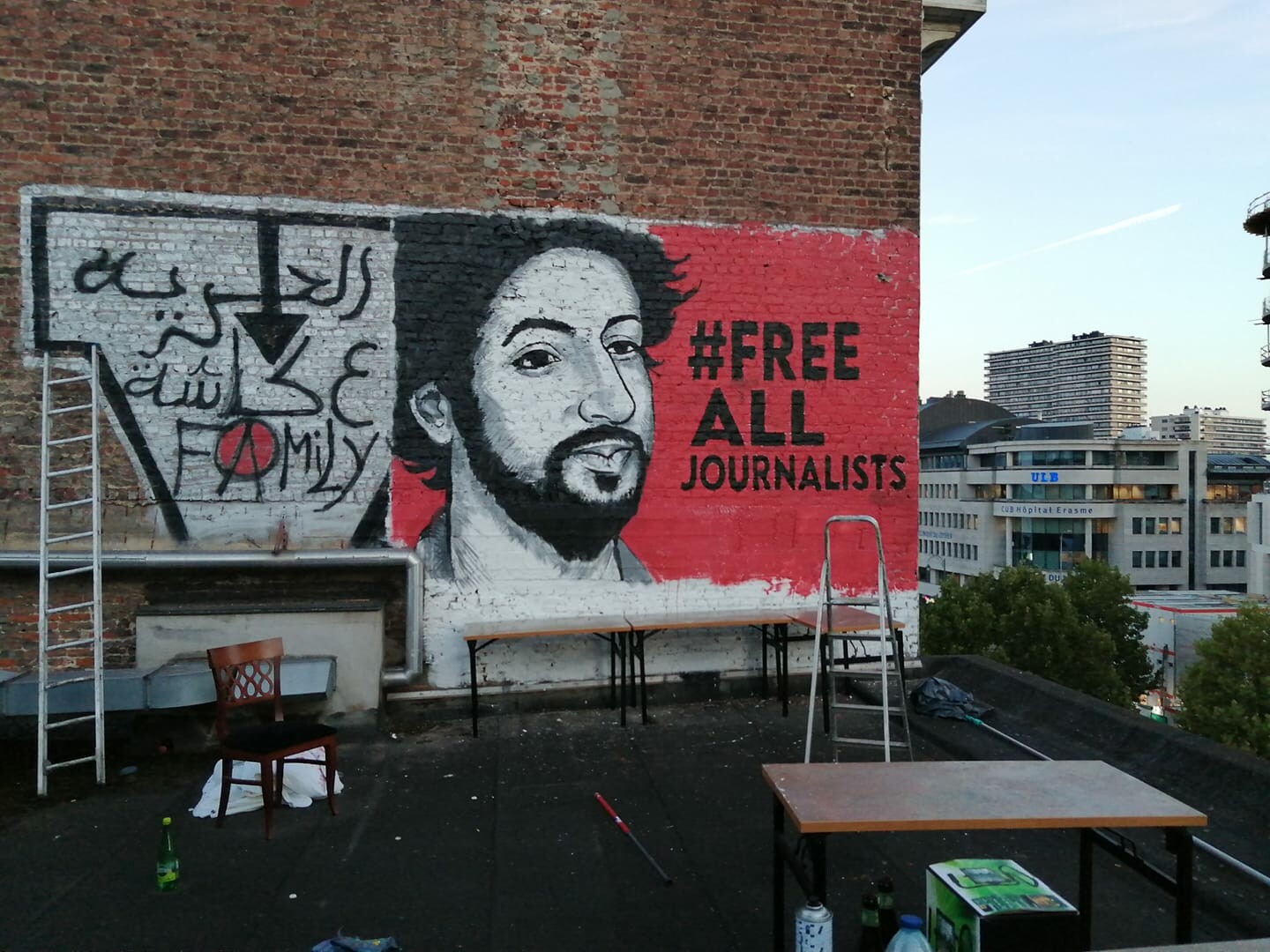
A mural of jailed Moroccan investigative journalist Omar Radi, painted by artist Mirra Markhaeva in Brussels. Photo by Mouad Belrhouat.
Radi was first detained in Casablanca in December of 2019 for “insulting a judge”—a charge that was leveled against him based on a series of tweets in which he criticized the heavy sentencing of protestors. On July 29, 2020, following an investigation by Amnesty International, which revealed that the Moroccan government had used Israel’s Pegasus spyware to hack his phone, Radi was jailed for espionage charges and sexual assault. Notably, the state has used similar charges against several other journalists and regime critics, including Soulaimane Raissouni and Taoufik Bouachrine. In December of 2020, a trial for Radi was held lasting only 15 minutes, in which he was found guilty. Several international observers, including Human Rights Watch, have deemed the trial unfair for failing to grant Radi due process. The court, for example, ignored evidence and denied his legal team access to the case file. In March of 2022, in an appeal, he was sentenced to six years in prison, where he remains until today.
Radi’s case is one of many that speak to how authoritarian states are using new surveillance technologies and legal regimes to further carceral systems and silence their critics within and across borders. The mural, like the issue cover, is a plea to recognize the human stakes of these webs of power and to continue calling for the freedom of all political prisoners.
The project was organized in August of 2020 by a group of artists, including Mouad Belrhouat. Belrhouat is a Moroccan rapper who goes by the name l7a9ed and who has also been imprisoned by the Moroccan state. The mural itself was painted on the side of a building in the Brussels city center by Brussels-based visual artist Mirra Markhaeva. Markhaeva says of the work, “It was a very urgent and reactionary piece to show that the world reacts and transforms even visually when such injustice occurs.” The photograph of its construction was taken by Belrhouat, who shared the image with MERIP for the issue’s cover.
Read the first article in MER issue 307/308 “Frontlines—Journalism and Activism in an Age of Transnational Repression.”
